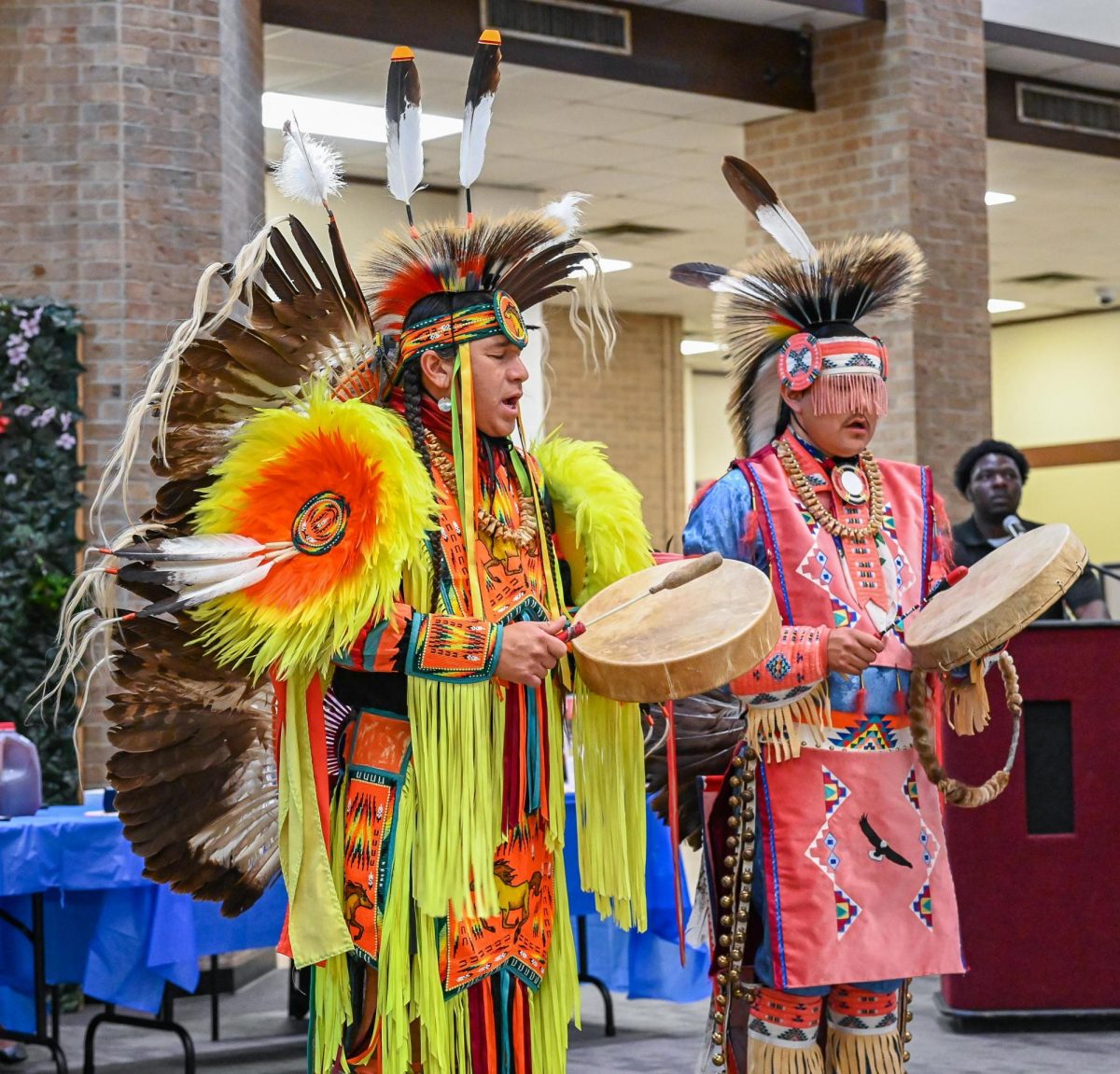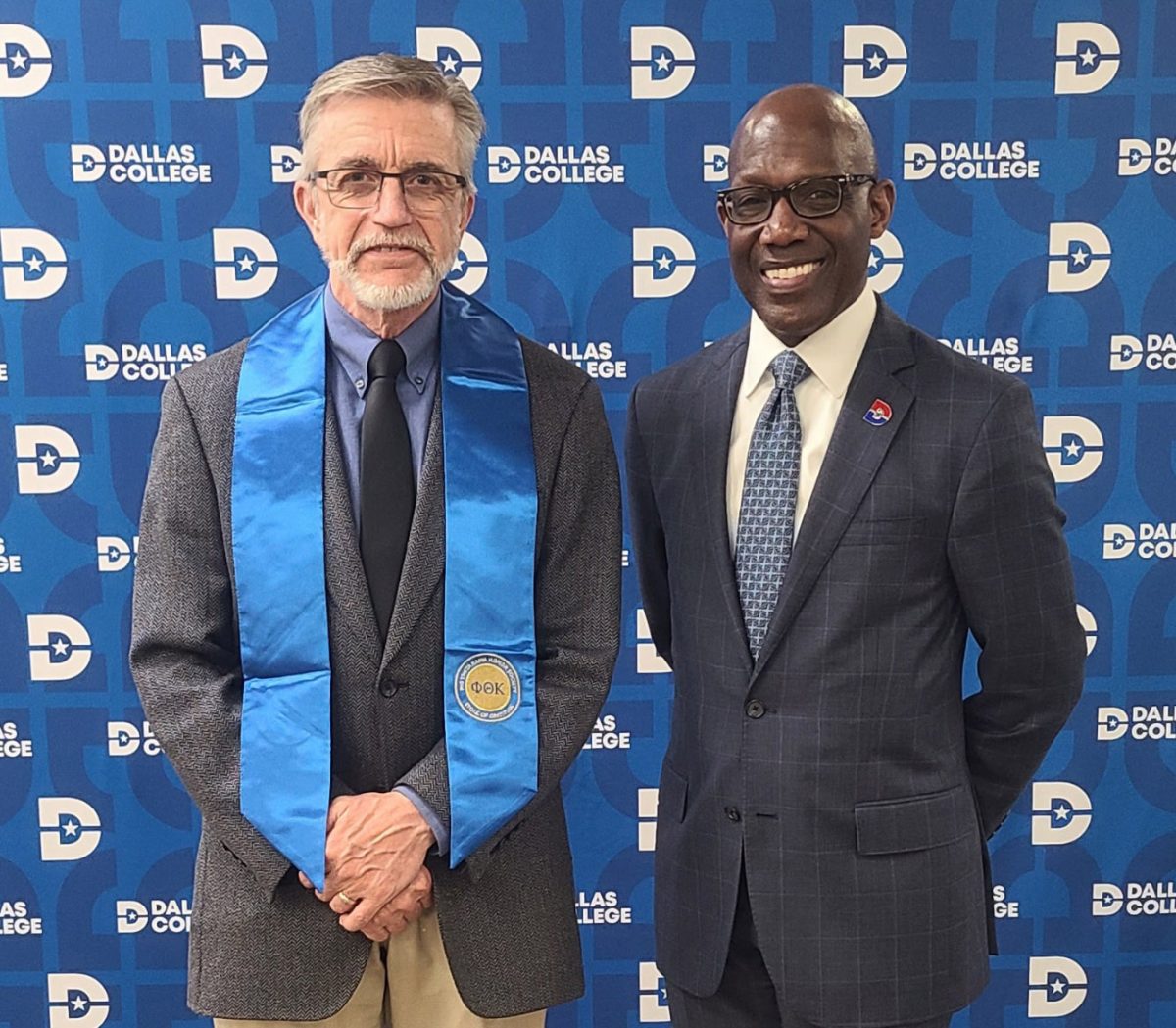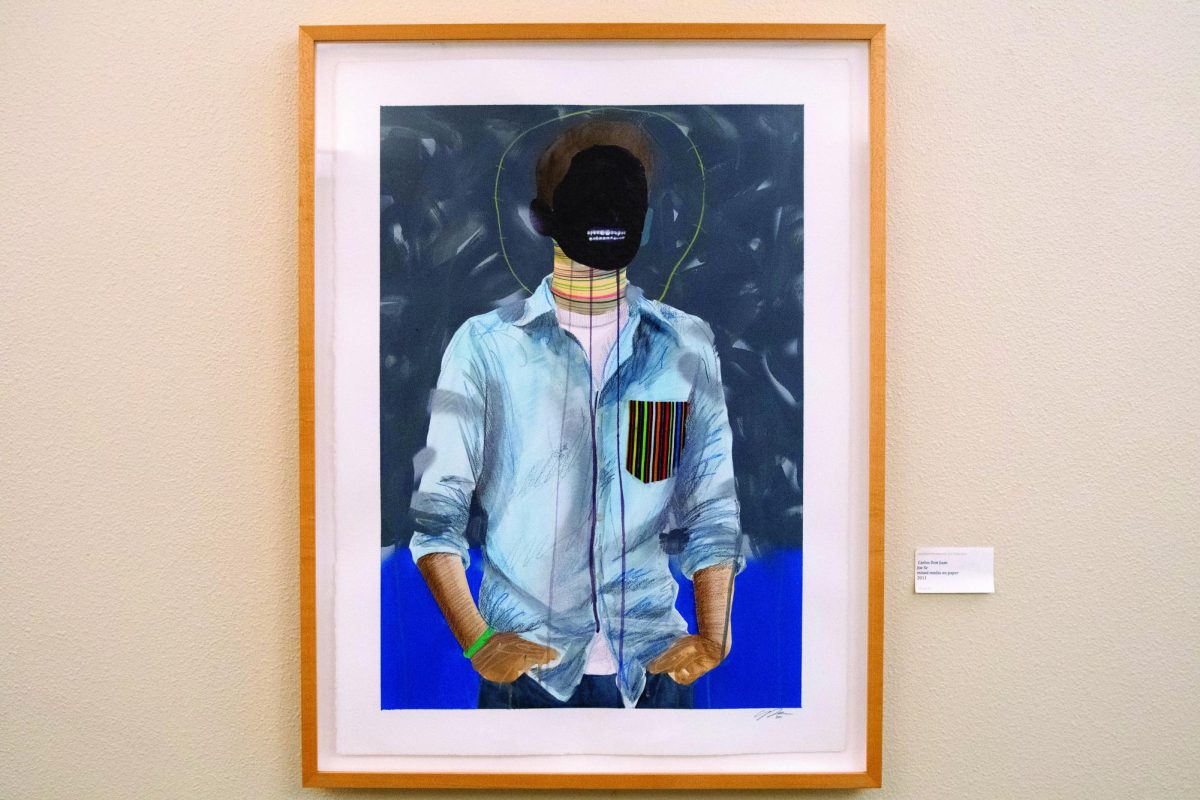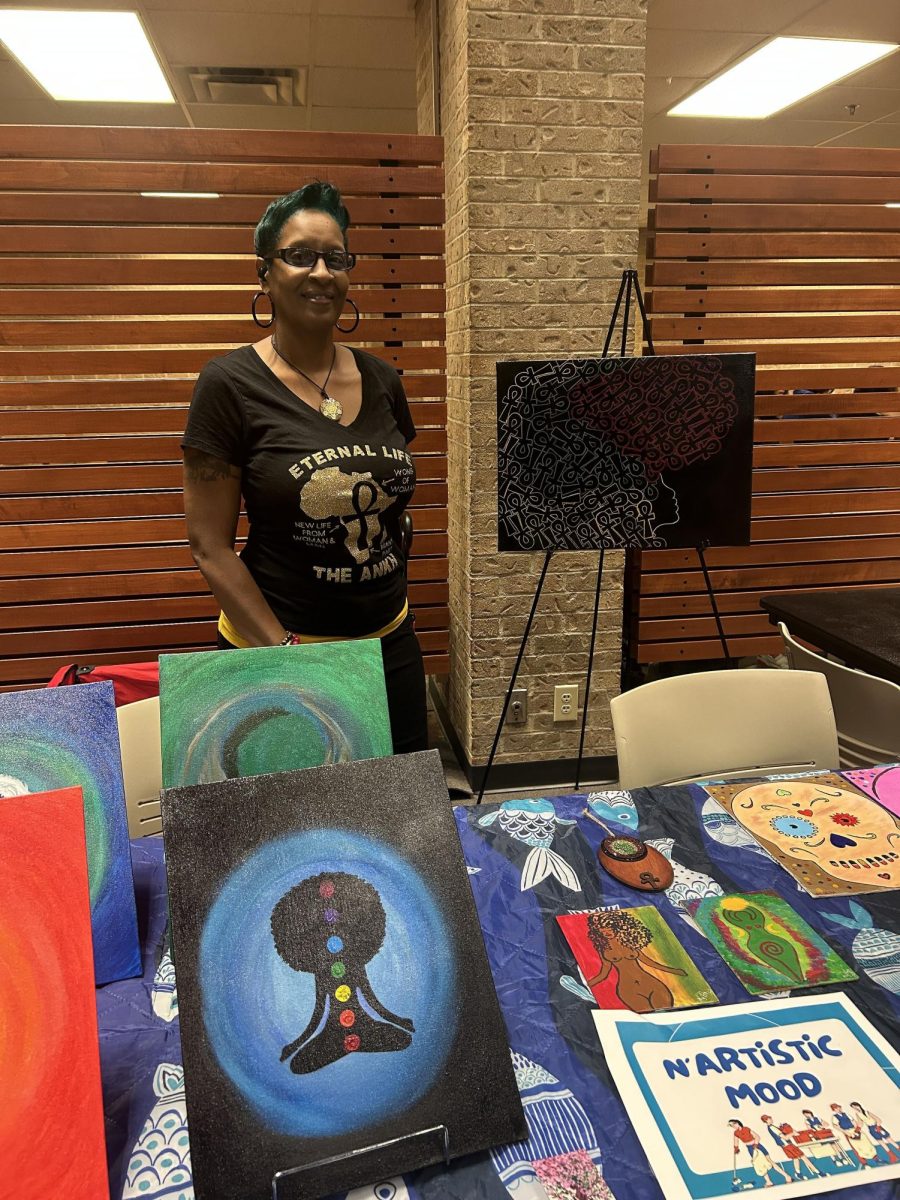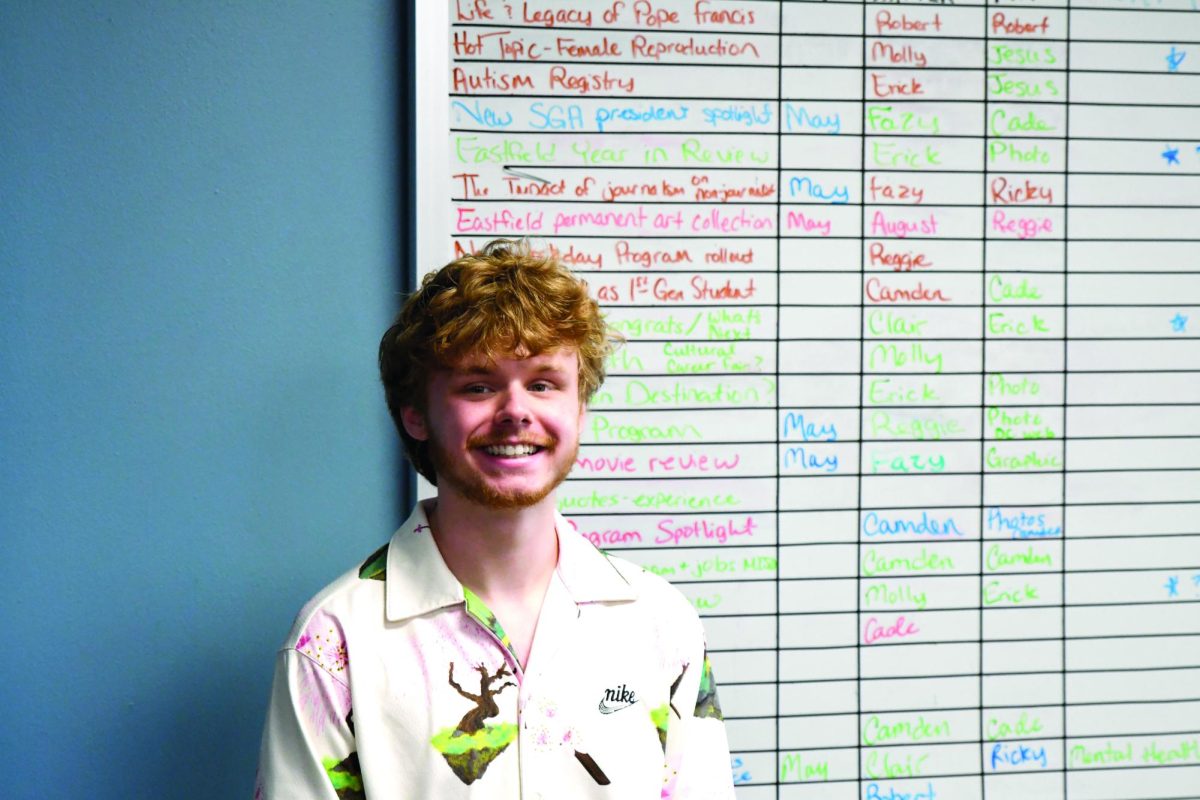The Anoli Dancers treated Eastfield students to a cultural exhibition that also served as a history lesson to kick off Native American Heritage Month.
Michael Roberts said, “Halito!,” a Choctaw greeting, to everyone before he explained that all of the dances they were going to perform had a story or meaning behind them. Roberts also emphasized the importance of these events because they were outlawed until the late 70s. The first performer was Roberts’ son-in-law, Angelo Begay, a member of the Navajo tribe who’s danced for about 15 years. Begay per- formed the men’s prairie chicken dance and said the dance originated from the Blackfoot tribe when a boy happened upon some dancing chickens.
The boy was entertained by the chickens’ celebration of life and knocked one out to bring home to feed his family. That night after they ate, the chicken appeared to the boy in his dream. Rather than being upset, the chicken was honored and decided to pass down its song and dance to the boy, encouraging him to show them to his people so that they would live on. And live on they have, thanks to skilled performers such as Begay and Roberts. Begay, dressed in red, puffed out his chest as he danced around the middle of The Hive with contagious energy as Roberts supported him with singing and drumming.
As Begay finished, Roberts pointed out and stressed the significance of each part of Begay’s outfit.
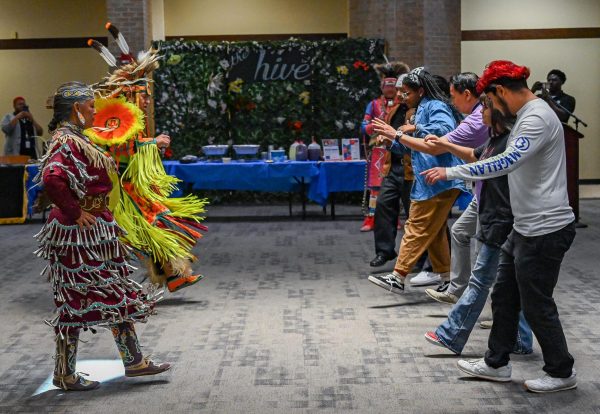
“The designs that an individual chooses, the colors they choose, represent clan, tribe and family,” Roberts said.
For instance, the clanging strings of bells represent chirping crickets and are placed around his ankles to be near the grass, where the crickets live. Begay also sported a porcupine headdress, something that was worn by tribes as a sign of aggression to anyone who spotted them from a distance.
Next, Rebecca Roberts from the New Mexico-based Taos Pueblo tribe performed the women’s jingle dress dance, a dance that came to a father in a vision as a way to cure his sick daughter. The dance involves a dress covered in all sorts of trinkets: bones, shells and anything else that would make that jingling sound because the sound is what healed the girl.
After his wife’s performance, Michael stepped into the center to show off his championship-winning dance skills as he performed the men’s fancy war dance, which was inspired by the quick, bucking movements of horses. Michael claimed to “not be a young buck anymore,” but captivated the audience with his dance.
“Those songs have meaning,” he said. “Some of those songs are talking about those war stories. Some of those songs are talking about individuals. While we’re dancing, we know those songs and the stories behind those songs. So a lot of times, the tiredness and all those things, they all go away and we’re in that moment.”
Michael also got the crowd involved and urged people to join for a quick lesson and dance competition before ending with a large friendship circle dance. One of the first to hop up and join was associate of science major Jose Navarrete.
“I’m also half Native American, but from the tribes in Mexico,” Navarrete said. “It’s cool seeing how different it is and how they do it in the United States. It’s just nice to see the culture get the respect that it deserves.”
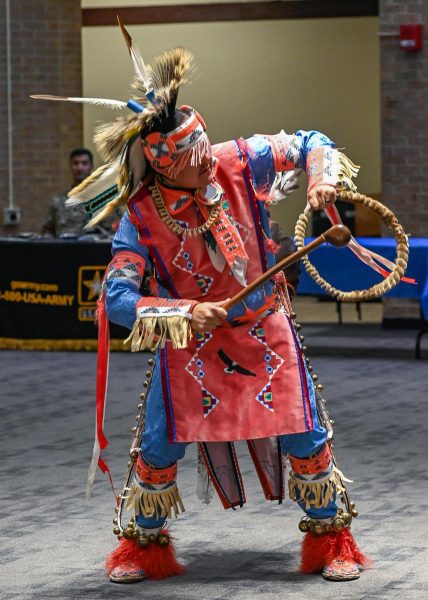
The floor was then opened up for questions, with the first one being, “If another tribe came to your celebration, would they be welcomed?” “Yes, they would be very welcome to come and dance with us,” Michael answered. “There’s a legend called The Eagle and The Condor. … We as Native Americans feel like the eagle and the condor are both powerful birds. When they come together, they say that it’s a sign that times are changing. [A sign that] our ways are coming back and becoming strong again.”
Michael said he hopes that events like these see people leaving with a better understanding of his Native American culture by washing away the derogatory stereotypes that were pushed so heavily throughout the 20th century.
“Especially during these times that we live in now with [people] erasing history,” Michael said after the event. “We were there. That wasn’t too long ago: ’78, whenever the Religious Freedom Act came about. Before that time, [there was] that risk of being jailed or imprisoned or put to death just for doing something that the creator gave us.”
Before leaving, Michael told the audience that there was no Choctaw word for goodbye, so in its place, he said, “Chi-psa la chi-ki.”
“That means we will see you again. Maybe not this lifetime; maybe in the next lifetime. Our paths will cross again.”

